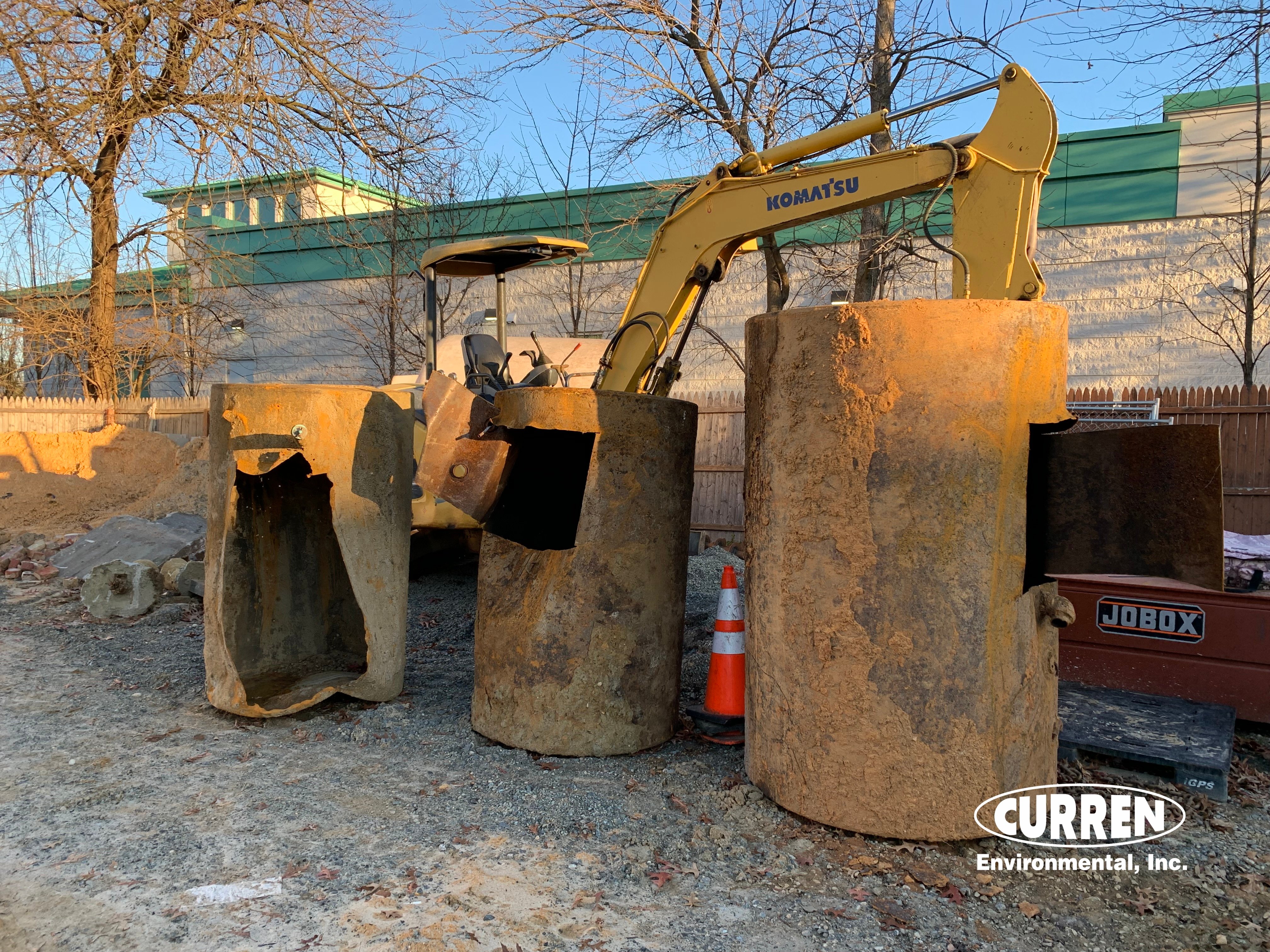Heating Oil Tank Testing
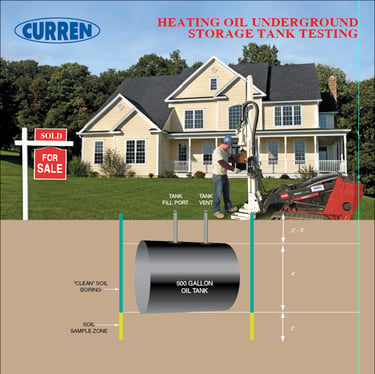
Underground Oil Tank Testing
Nothing lasts forever and tanks are no exception. Unlike roofs that LEAK AND YOU FIND WATER ON THE FLOOR when a tank leaks the owner may not see any signs. Tanks commonly corrode at the bottom of the tank due to the slu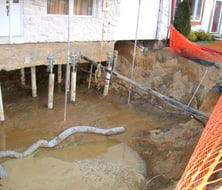 dge being acid and corrode the tank from the inside. Oil leaks down and out and goes unnoticed by the owner. If a hole was present on top of the tank in theory rain water5 enters the tank and the heater will shut off.
dge being acid and corrode the tank from the inside. Oil leaks down and out and goes unnoticed by the owner. If a hole was present on top of the tank in theory rain water5 enters the tank and the heater will shut off.
Tanks that have been taken out of service, well they are like a box of chocolates, you never know what you will get (good or bad).
When a property owner needs an underground storage tank (UST) tested (tank investigated) to satisfy an agreement of sale in a real estate transaction, soil borings around the tank (UST) are the recommended course of action. This method of tank or soil investigation tests the soil around the tank or the former tank area for the presence of heating oil. This method will not damage the tank or the landscaping.
Curren's oil tank test methods is effective in identifying soil contamination resulting from a leaking UST, surface spill, or previously removed leaking tank system. The tank does not have to be filled with oil. Our test method applies to active (in use) tank systems, previously abandoned tank systems, and in conjunction with in-place tank abandonment closures.
Oil Tank Testing Process
You investigate the tank for leaks by testing soil around the tank. Since you are drilling in the ground, by law you must obtain a utility mark-out (So underground utilities are marked) which can take 3 to 4 days to complete, you are subject to fines if you do not do this.
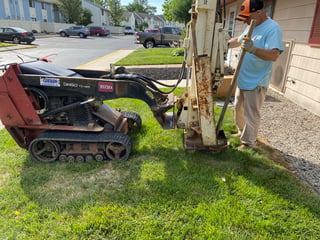
You must determine the tank's contents. This determines, the depth of the tank and tank diameter for verification of tank size, as well as the amount of liquid such as water in the tank.)
This also means when you dill the soil you must go DEEPER than the Bottom depth of the tank.
The acquisition of soil samples from around a buried tank allows you to evaluate the presence of petroleum compounds in the soil. Any detection of oil is a fail as you do not expect to find oil outside a buried tank when the tank is not leaking.
Although oil is oil different States have different testing methods you must follow:
- Extractable Petroleum Hydrocarbons (EPH) for New Jersey,
- DRO (diesel range organics) for Delaware
- Pennsylvania Short List Diesel Fuel / Fuel Oil No. 2 by EPA Method 8260C per Table IV-9 of the PADEP Storage Tank Program Guidance Section IV.
Samples are submitted to an independent state-certified laboratory to analyze the soil sample, ensuring an unbiased and accurate test result.
The laboratory data once completed will be reviewed by a Curren project manager and the results will be compared to applicable state soil standards. Curren Environmental will draft a report on the testing and provide applicable recommendations and costs. Say we find out the tank is leaking, we can provide the cost to remove the tank and for remediation.
Testing the soil will also allow you to evaluate for contamination for a tank that may have leaked and was removed and replaced, a new tank was installed in the grave of a removed leaking tank, yes that is a thing. To be clear, removal and replacement of older tanks (tanks out of warranty) is always recommended as every tank will eventually fail. Removal unfortunately is not always feasible in real estate sales, but it is worth discussing between buyers and sellers.
Does Oil Tank Testing Have Limitations?
Yes, nothing is bulletproof. The good and bad of testing an oil tank by performing soil borings is you get quantitative data of oil levels where you sample.
-
The bad of testing an oil tank by performing soil borings is you only get data from where you test! You cannot test under the tank itself so you could have oil under the tank.
-
If you test 1' away from the tank you could possible have a leak within that area of soil.
-
You never test between the tank and the building it feeds because you have 2 small copper lines you do not want to risk hitting and causing an oil discharge. So you will have a data gap regarding the area between the tank and the building.
-
Of course testing is better than not testing, so even though you could have undetected contamination under the tank or between the tank and the building, you don't have a $30,000 cleanup if the other sample locations are clean. Big IF though.
-
Removal and replacement of tanks is always a prudent idea as well, since a new tank will have a 10-year or longer warranty. Most buried tanks are well out of any manufacturer warranty. Generally speaking, if a home has had a roof replaced, the oil tank should also have been replaced.
Expert Advice 888-301-1050
Why Test an Oil Tank?
-
Selling or Buying a home with a heating oil tank.
-
Because the responsibility of oil cleanup is upon the property owner, not the person who installed or last used the tank.
-
Changing Homeowner Insurance due to the presence of a heating oil tank.
-
Converting from an underground heating oil tank to an above-ground storage tank.
-
The underground heating oil storage tank was removed and there is no report clearly stating the tank did not leak.
-
A heating oil tank was filled with sand or foam and no report documenting the tank closure activities is available.
-
A sudden increase in fuel oil consumption.
-
A mortgage or refinance is occurring.
-
You don't want to buy a property with a leaking oil tank, aka, you don't want to buy someone's problem.
What Should I do if my heating oil tank leaks?
Once you have determined that your underground storage tank has leaked you must notify the applicable state agency, such as the NJDEP, PADEP or DNREC.
Call your insurance carrier and report that a release has occurred so that you will be given a claim number and you will then find out if the tank leak is a covered loss.
Call a certified Environmental Contractor such as Curren Environmental. The environmental contractor will go over the findings of the report, offer the best solution and the possible costs associated with the tank removal and/or the cleanup procedure that may be required.
If your tank is found to be leaking, you will have to move t step 2 which is defining the extent f the contamination or plume. Once you know how far the oil has spread you can determine costs to remediate.
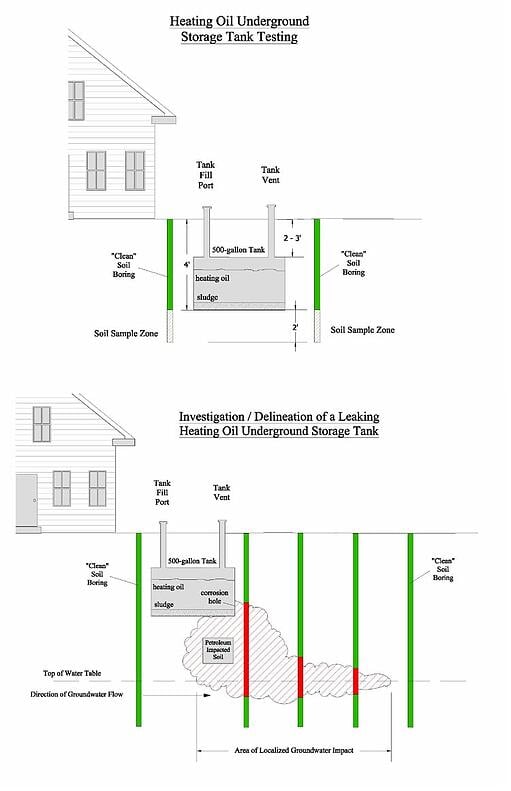
Will My Insurance Company Pay for the Oil Tank Cleanup?
In order to understand the answer to this question we need to explain the difference between first-party coverage and third-party coverage. There are many factors that go into determining insurance coverage for a heating oil UST release. First-party coverage deals with a leak and subsequent clean-up that is confined to your personal property such as soil impacted with heating oil. Third-party coverage deals with a leak and subsequent clean-up that spreads to the property you do not own such as your neighbor's property or groundwater on your property. Under New Jersey case law, the definition of third-party coverage also includes the clean-up of groundwater, even if it is limited to your property as groundwater is owned by the State of New Jersey not individual property owners. When you contaminate groundwater you are damaging a third party which is the State of New Jersey.
Curren Environmental maintains professional a relationship with many of the homeowners' insurance carriers, mortgage lenders, and title companies that underwrite in the State of New Jersey, Pennsylvania, and Delaware. With over 25 years of experience, Curren Environmental is well-versed in the complicated world of the insurance industry as it relates to tank leaks.
